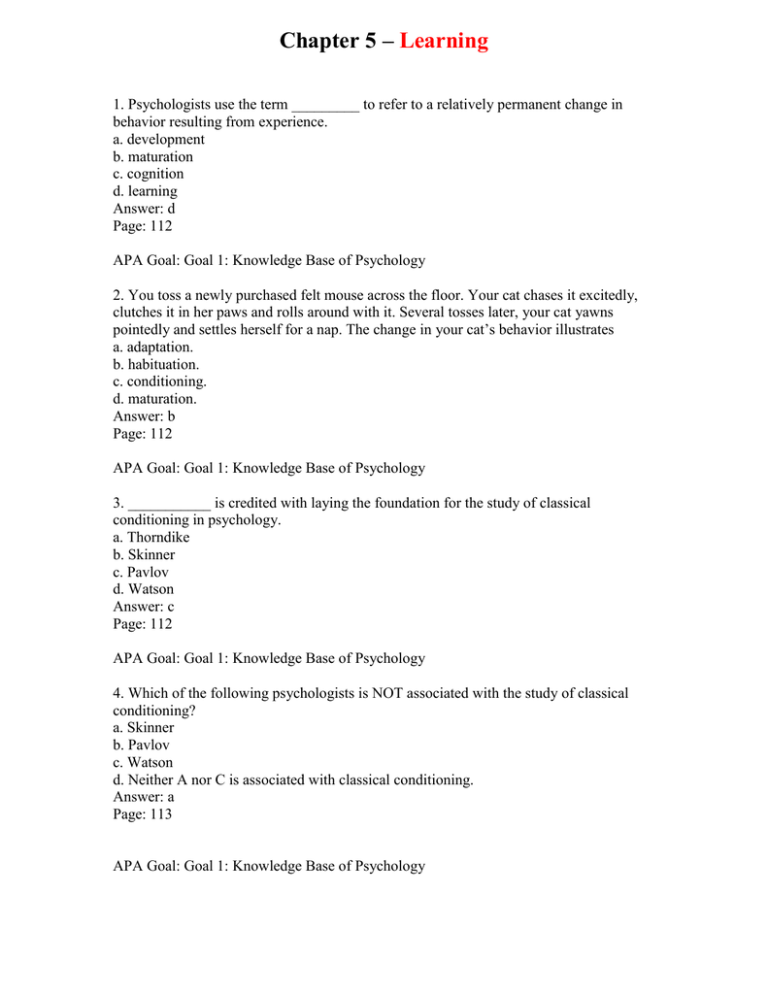Thorndike Used Which Term to Describe Behaviors
Taking something away to reduce a behavior EX. The halo effect phenomenon when you form a general impression that someone is good based on one characteristic and then you assume their other qualities are.
Edward Thorndike 1898 is famous in psychology for his work on learning theory that lead to the development of operant conditioning within Behaviorism.

. As mentioned earlier the ideas of Thorndike influenced much of Skinners work on operant conditioning. Ivan Pavlov Edward Thorndike and B. By studying animals and usually just cats he devised an experiment to determine how they learn new skills.
Prior to beginning work on this weeks journal read the PSY650 Week Four Treatment Plan Case 15. Edward Thorndike Edward Thorndikes study on learning theory prompted the growth of operant conditioning in behaviorism Baumeister 2011. Please also read the Rizvi et al.
In studying problem solving behavior in kittens Thorndike used which term to describe behaviors they displayed to escape an enclosure by pulling a string on a latch. He was the one that coined the term law of effect which is a theoretical precursor to the process of reinforcement. Learning of complex behaviors by proposing that such behaviors are actually.
Skinners ideas were based on Edward Thorndikes law of effect which stated that behavior that elicits positive consequences will probably be repeated while behavior that elicits negative consequences will probably not be repeated. Edward Thorndike Theory Explained. Click card to see definition.
P is commonly called Avoidance Training and is one of the four quadrants of Operant Conditioning. Predatory Drift is a term that was coined either by Ian Dunbar and we believe first published by Jean Donaldson. Thorndike used the term to describe our tendency to form a positive impression of another person or a company brand product etc based on a generalization about what we view as good and bad.
In this monograph Thorndike demonstrated that animals display behaviors as a result of building ordinary associations with various external events or stimuli. The ability to recognize how one would act in a specific situation according to the Law of Effect The term used to describe the technique that Thorndike. In studying problem behavior in kittens Thorndike used which term to describe behaviors they displayed to escape an enclosure by pulling a string on a latch.
Chapters 3 and 4 in Human Learning describe the work of three prominent early behaviorists. Chris Sawyer MEdBCBA. Describe Thorndikes Law of Effect Responses that are followed immediately by a satisfier tend to be stamped in.
2013 An Overview of Dialectical Behavior Therapy for Professional Psychologists Harned et al. If a particular behavior is followed by a desirable consequence or a reward that behavior is more likely to happen again in the future. The defining factor of reinforcement theory is of course reinforcement which can be either positive or negative.
Thorndike used the cats behavior in a puzzle box to describe what happens when all beings learn anything. All learning involves the formation of connections and connections were strengthened according to the law of effect. Borderline Personality Disorder in Gorenstein and Comer 2014 and Borderline Personality Disorder in Sneed et al.
The essence of the. Skinner held that thoughts were personal behaviors that could be analyzed similar to observed behaviors. Click card to see definition.
This evaluation led Thorndike to conclude that animals learn solely by trial and error or reward and punishment. Tap again to see term. September 19 2018.
Observing these changes in the cats behavior led Thorndike to develop his law of effect the principle that responses that create a typically pleasant outcome in a particular situation are more likely to occur again in a similar situation whereas responses that produce a typically unpleasant outcome are less likely to occur again in the situation Thorndike 1911. He would then place a cat inside the box but encourage it to escape by placing a treat outside of. Thorndike demonstrated his principle of Law of Effect using the puzzle box experiment Superstitious behavior is the result of accidental reinforcement Successive approximation or shaping has many applications specifically with regard to behavior modification in the classroom Skinner used the term operant conditioning or instrumental conditioning to.
1 The use of the term habit can be traced back to the writings of an early cognitive psychologist William James 1890. Click again to see term. Taking away a preferred item paying a fine for speeding loss of recess.
If youve heard the name Edward Thorndike you are probably aware of the importance this psychologist had on early behavioral science. The law of effect has two parts. Thorndike said that the.
View Notes - personalityTerm. Thorndikes law of effect attempts to describe behavior in terms of Goal-directed and intelligent behavior O Evolutionary theory Variation of behavior and mechanistic non-intelligent selection mechanisms CRS and URS. Whereas classical conditioning depends on developing associations between events operant conditioning involves learning from the consequences of our behavior.
Behaviorism is defined in the following ways by scholarly sources. The addition of some stimulus that serves to reduce a behavior. 160 state that behaviorism is a theory that views learning as a cause and effect mechanism in which external factors lead to a response and over time this response becomes a learnt behavior.
This is when a large dogs acceptable behavior shifts to predatory behavior. Furthermore this thesis was the very foundation of Thorndikes Law of effect. Thorndike created a puzzle box.
Edward Thorndike was a psychologist who developed the law of effect. Tap card to see definition. Thus Thorndike conducted experiments with cats dogs and chicks to test for such associations.
The Edward Thorndike theory is a learning theory that focuses on operant conditioning within behaviors.

Educational Psychology Wikieducator Educational Psychology Education Psychology

A Brief History Of Behavior Analysis Behavior Frontiers

Behaviorism Its Strengths And Weaknesses Learning Theory Operant Conditioning Social Learning Theory

Comments
Post a Comment